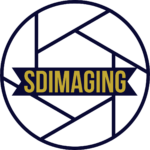Aerial photography techniques have transformed how we see the world, offering perspectives that inspire awe and curiosity. Whether using drones, planes, or helicopters, aerial photography combines art, technology, and precision to produce breathtaking imagery from above. With the right blend of skill, equipment, and creativity, photographers can elevate ordinary landscapes into striking visual masterpieces. This form of photography captures not only scenery but also emotion and context offering viewers an entirely new way to experience their environment.
Understanding the Essence of Aerial Photography
Aerial photography represents the intersection of innovation and imagination. It allows photographers to tell stories from above revealing geometric patterns, natural beauty, and human-made designs that are invisible from the ground. Mastering aerial photography techniques requires patience, practice, and a keen eye for balance between altitude, angle, and lighting. When used effectively, these elements help convey a sense of scale and grandeur.
The Rise of Drone Photography
Drone photography has made aerial imaging accessible to photographers of all levels. Modern drones come with stabilised cameras and intelligent flight systems that make capturing stunning visuals easier than ever. With the right combination of altitude, motion, and perspective, drone photography can turn everyday scenes into cinematic compositions. Many artists now use drones not only for landscape photography but also for creative storytelling, travel visuals, and real estate shoots.
Why Perspective Matters
Perspective gives aerial images their unique impact. Shooting from above allows photographers to capture symmetry, contrast, and movement that would otherwise go unnoticed. Changing angles or altitude can dramatically affect how the viewer experiences the image. Understanding this principle helps transform simple scenes like roads, coastlines, or forests into abstract art. Experimenting with different viewpoints keeps aerial photography exciting and visually engaging.
Essential Aerial Photography Techniques
To master aerial photography, focus on the fundamental techniques that define composition, clarity, and creativity. These techniques ensure your images remain visually balanced, emotionally resonant, and technically sound.
Mastering Composition from Above
Composition in aerial photography is all about structure and form. Unlike ground shots, aerial imagery emphasises patterns, lines, and shapes. Using leading lines, repetition, and symmetry can create captivating visuals. A top-down “nadir” shot showcases geometry, while angled compositions provide depth. The goal is to create balance ensuring every element of the frame contributes to the story you’re trying to tell.
Lighting and Timing for Perfect Shots
Light is the essence of photography, and in aerial work, it determines texture and tone. Shooting during golden hours sunrise and sunset adds warmth and drama. Midday light, while harsh, can enhance colour vibrancy, especially in urban or coastal scenes. Photographers should also watch for cloud formations, as diffused light can reduce glare and maintain detail. Understanding how light interacts with landscapes helps produce visually dynamic aerial imagery.
Choosing the Right Equipment for Aerial Photography
Your equipment determines how effectively you can capture professional-quality aerial shots. The right tools enhance performance, image clarity, and creative freedom.
Drones and Cameras for Every Skill Level
Choosing the right drone depends on your expertise and project goals. Beginners might prefer lightweight drones with built-in stabilisation and automated flight modes. Professionals, on the other hand, often use drones with interchangeable lenses and RAW shooting capabilities. Knowing how to adjust settings such as shutter speed, ISO, and aperture ensures sharper images and smoother footage vital for both photography and videography.
Accessories That Enhance Performance
Accessories are essential for reliability and image control. ND filters balance exposure during bright daylight, while extra batteries extend flight sessions crucial for remote locations. Propeller guards improve safety, and portable cases protect delicate parts during travel. These tools make the process smoother, ensuring that the photographer can focus on creativity rather than logistics.
Post-Processing and Editing for Aerial Images
Editing is where aerial photography truly comes to life. Post-processing refines details, enhances visual appeal, and helps convey the photographer’s creative vision.
Enhancing Colours and Textures
Editing software like Adobe Lightroom or Capture One offers powerful tools for enhancing aerial images. Adjusting saturation, contrast, and shadows brings landscapes to life, while maintaining a natural look. Emphasising textures in clouds, trees, or water adds realism and depth. The goal is to complement the natural scene rather than over-process it, preserving authenticity while enhancing beauty.
Cropping and Perspective Correction
Cropping helps focus attention on key subjects while eliminating distractions. Straightening horizons and correcting lens distortion gives images a professional finish. Many aerial photos benefit from subtle perspective adjustments to achieve visual harmony. This stage transforms a technically sound image into a visually polished masterpiece ready for presentation or print.
Conclusion
Aerial photography continues to redefine how we experience the world. By mastering aerial photography techniques and combining them with creativity, photographers can capture breathtaking perspectives that inspire emotion and wonder. At SD Imaging this harmony between artistry and technology comes to life showcasing how the right vision and skill can transform ordinary landscapes into extraordinary imagery. With practice, proper equipment, and respect for safety, the sky truly becomes the canvas, and every flight an opportunity to create something remarkable
Frequently Asked Questions
What are the best aerial photography techniques for beginners?
Start by mastering stable flight and basic composition. Use auto-stabilised drones and experiment with different altitudes to understand perspective and framing.
How can I improve the quality of my drone photography?
Plan your shots based on lighting and weather. Shoot in RAW format for better editing flexibility and use filters to control exposure during bright conditions.
Is drone photography safe for wildlife areas?
It can be, provided you maintain distance and avoid flying near animals or nesting sites. Always follow local environmental guidelines.
What software is best for editing aerial photos?
Adobe Lightroom, Photoshop, and Capture One are widely used. They provide advanced tools for adjusting colour, tone, and composition while maintaining image quality.
Do I need a licence to operate a drone for photography?
Yes, in most countries. Registration and certification depend on drone weight and usage type. Always check national regulations before conducting commercial flights.



